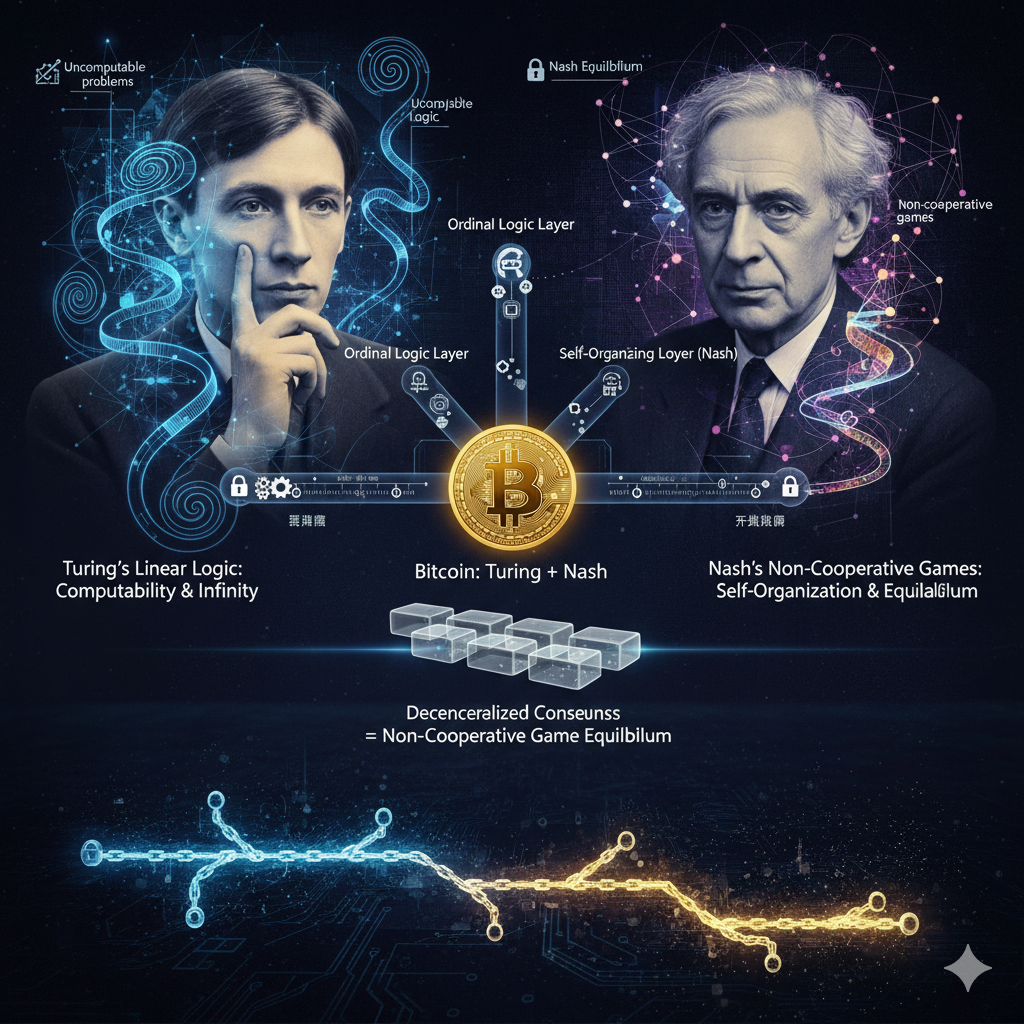
Bitcoin is not a product that emerged out of thin air; its deep logic was already embedded in the theories of Turing and Nash. Only by understanding the contributions of these two intellectual giants can we truly grasp Bitcoin’s unique status as a “super-formal system.”
Through the Turing machine and ordinal logic, Turing delineated the boundary between the computable and the incomputable:
However, Turing’s logical system remained linear. It relied on external observers or adjudicators to maintain itself, and lacked self-organization and completeness.
Nash’s breakthrough was the proposal of non-cooperative game equilibrium. Under this logic:
This is the famous Nash equilibrium. It is not the result of linear deduction, but rather a form of nonlinear, self-organizing overall completeness.
If we combine the contributions of Turing and Nash, we can see a three-layer structure:
These three layers evolve step by step, and ultimately, in Nash’s non-cooperative game logic, overall completeness is formed.
The design of Bitcoin is precisely the intersection of these two logics:
Therefore, Bitcoin is not the product of a single algorithm, but the combination of Turing’s ordinal logic and Nash’s non-cooperative game.
In the Bitcoin network, competition among nodes is not the result of centralized adjudication, but an open game:
This convergence mechanism is precisely the embodiment of non-cooperative game equilibrium: all individuals, through self-interested actions, lead the system as a whole to evolve into a unique stable temporal order.
In other words: Decentralized consensus (convergence to the unique strongest solution) = Non-cooperative game equilibrium.
The essence of Bitcoin’s consensus is neither a recursive algorithm, nor an ordinal logic system without a unique strongest solution (which contains recursive Turing machine logic and non-recursive oracle machine logic).
On the foundation of ordinal logic, it introduces non-cooperative games, thereby achieving the natural equilibrium of game logic. This means that Bitcoin’s design is a layered introspective logic structure extended by Nash on the basis of Turing’s ordinal logic.
Even without a center or arbiter, it can still create a globally unique temporal order for humanity.